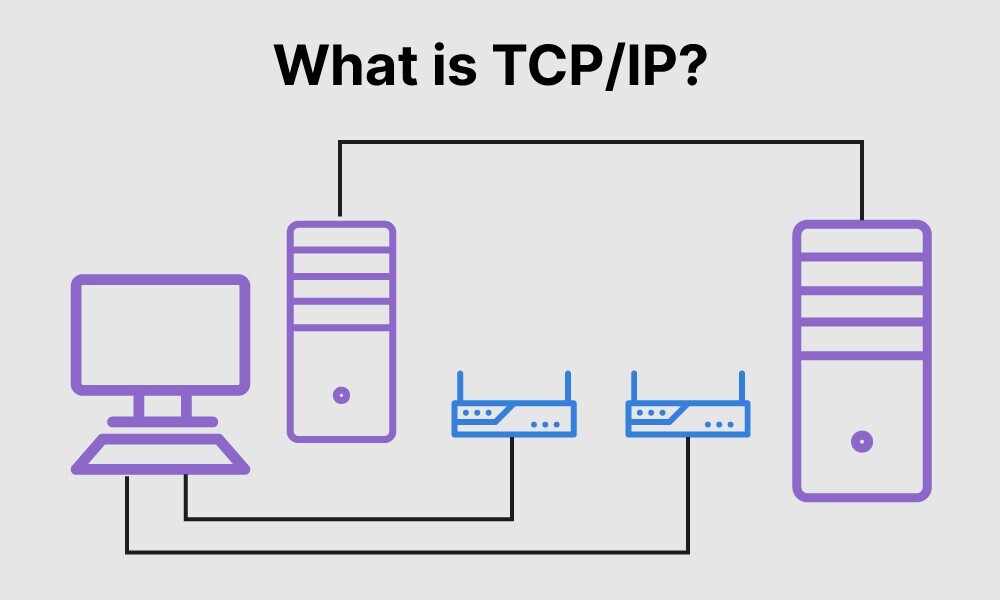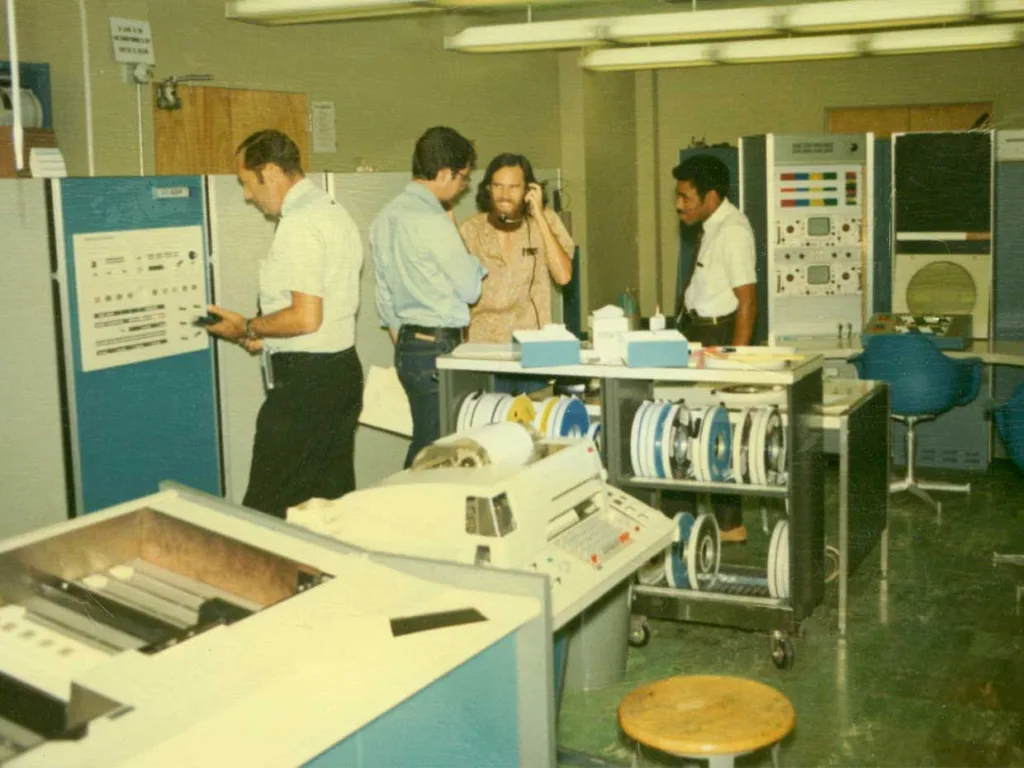The early days of the internet were a time of great innovation and experimentation. As more and more people began to connect to the network, the need for internet service providers (ISPs) grew. In this post, we’ll take a closer look at the history of early ISPs and how they paved the way for the internet we know and use today.
The first commercial version of ARPANET, the precursor to the internet, was introduced in 1974 by Telenet. However, it wasn’t until 1989 that the first ISP for the modern internet was established. This ISP was called “The World” and it began serving customers in the United States and Australia. The World became the first commercial ISP in the US when it served its first customer in November 1989.
At this time, the internet was still a relatively unknown entity, and many people didn’t fully understand what it was or how it worked. The World played a crucial role in educating the public about the internet and helping to make it more accessible. They offered direct access to the internet for a monthly fee, allowing people to connect to the network from their own homes.
In addition to The World, there were a number of other early ISPs that helped to shape the landscape of the internet. These included CompuServe and The Source, which were among the first major online services created to serve the market of personal computer users. CompuServe, which was ownd in the 1980s and 90s by H&R Block, and The Source, which was for a time owned by The Reader’s Digest, both provided users with access to email, games, and other online content.
While these early ISPs were important in helping to establish the internet as we know it today, they were also limited in many ways. Internet speeds were slow, and many people still relied on dial-up connections to connect to the network. However, these early ISPs paved the way for the development of faster and more reliable internet connections, as well as the creation of new types of online content and services.
Today, the internet is an integral part of our daily lives, and ISPs have become an essential part of our internet experience. While we may take for granted the ability to connect to the internet from anywhere in the world, it’s important to remember the early pioneers who helped to make it all possible. Without their efforts, we may never have had the internet revolution that has changed the world as we know it.
The Origins of Internet Service Providers
The first ISP, or Internet Service Provider, is widely believed to be Telenet, which was introduced in 1974 as the first commercial version of ARPANET. Telenet was a packet-switched network that allowed users to connect multiple computers and terminals to a single mainframe computer. However, it was limited to a small number of customers and mainly used for research purposes.
The first ISP for the Internet we know and use today is considered to be “The World,” which started serving customers in 1989. The World was founded by a group of individuals who wanted to provie affordable and accessible Internet services to the public. They offered dial-up connections, email, and Usenet newsgroups, and quickly gained popularity among early adopters of the Internet.
Following The World’s success, many other ISPs emerged in the early 1990s, including AOL, Prodigy, and CompuServe. These companies offered a range of services, such as email, web browsing, and chat rooms, and helped to popularize the Internet among the general public.
Today, there are countless ISPs around the world offering a wide range of services and technologies, from traditional dial-up connections to high-speed fiber-optic networks. However, Telenet and The World will always hold a special place in the history of the Internet as the pioneers of the ISP industry.

The History of the First ISP
The first Internet service providers (ISPs) were established in 1989 in both Australia and the United States. The World, located in Brookline, Massachusetts, became the first commercial ISP in the US and began serving customers in November of that year. ISPs offered the public direct access to the Internet for a monthly fee, and their emergence marked a significant milestone in the growth and accessibility of the Internet.
The Origins of Online Services
The first commercial online services were CompuServe and The Source, which went live in 1979. These services were created to serve the market of personal computer users. CompuServe, which was owned by H&R Block in the 1980s and 90s, and The Source, which was owned by The Reader’s Digest for a time, are considered the first major online services. These services provided access to email, news, and other information, as well as online communities and forums. They paved the way for the modern internet and the many online services and platforms we use today.
The Internet Service Before the Internet
The old internet service was commonly referred to as dial-up internet. This was a method of accessing the internet through a telephone line and modem. Users would have to dial a phone number to connect to their internet service provider (ISP) and then establish a connection through their modem. Dial-up internet was the most popular form of internet access in the 1990s and early 2000s, before broadband internet became widely available. While it was a groundbreaking technology at the time, it was also kown for its slow speeds, frequent disconnections, and the distinctive screeching sound of the modem connecting to the internet.
The Oldest Internet Protocol
The oldest Internet Protocol is the Transmission Control Protocol (TCP), created in the 1970s by computer scientists Robert Kahn and Vint Cerf. TCP was designed to allow multiple applications running on different computers to communicate with each oter over a network, and it formed the foundation for the early Internet. However, TCP alone was not enough to handle the complex needs of the growing network, so in the early 1980s, a new Internet Protocol called IP (Internet Protocol) was developed to work in conjunction with TCP. Together, TCP/IP became the standard networking protocol for the Internet and remains the core protocol used today.

The Origin of Internet Service Providers (ISPs)
The father of ISP, or Internet Service Provider, is widely recognized as Vint Cerf. He is an American computer scientist who co-designed the TCP/IP protocol, wich serves as the foundation for the internet. Cerf played a crucial role in the development of the internet, and his work has helped to shape the way we communicate, work, and live in the digital age. He has also been recognized for his contributions to the field of computer science, receiving numerous awards and honors, including the Presidential Medal of Freedom in 2005. In short, Vint Cerf is a key figure in the history of the internet and his work as a co-designer of TCP/IP has been instrumental in the development of the ISP industry.
Types of Internet Service Providers (ISPs)
There are tree main types of ISP (Internet Service Provider) connections available to consumers: DSL (digital subscriber line), cable broadband, and fibre optic broadband. DSL is a type of internet connection that uses existing telephone lines to transmit data. Cable broadband, on the other hand, uses the same cables as cable TV to provide internet access. fibre optic broadband uses fibre optic cables to transmit data, which allows for faster speeds and more reliable connections. Each of these types of connections has its own advantages and disadvantages, and the best choice will depend on factors such as location, budget, and internet usage needs.
Types of Internet Service Providers (ISPs)
The two main types of ISP, or Internet Service Provider, are cable and DSL. Cable connections use coaxial cables to transmit data, and are often shared by multiple neighbors or households, which can affect the access speed durig peak hours. On the other hand, DSL, or Digital Subscriber Line, connections use telephone lines to transmit data, and require a DSL router to be connected to a phone jack or phone cable. While cable connections often offer faster download speeds, DSL connections may provide more consistent speeds and can be more widely available in remote areas. It’s also worth noting that other types of ISPs may exist, such as satellite or fiber optic connections, depending on the location and availability.
Types of Internet Service Providers (ISPs)
There are several types of Internet Service Providers (ISPs) available in the market. The most common types are cable, fiber, DSL (Digital Subscriber Line), and satellite internet.
Cable internet is povided by cable companies that use existing cable television infrastructure to provide high-speed internet access. This type of connection can offer fast download speeds, but the upload speeds may be slower.
Fiber internet is the fastest type of internet available, using fiber-optic cables to transmit data. It can offer symmetric upload and download speeds, making it ideal for high-bandwidth applications such as video conferencing and online gaming.
DSL internet is provided by phone companies and uses existing telephone lines to transmit data. The download and upload speeds may vary depending on the distance between the user’s location and the provider’s central office.
Satellite internet is an option for those living in rural or remote areas where other types of internet connectivity are not available. It uses a satellite dish to transmit and receive data, but it can be affected by weather conditions and may have higher latency compared to other types of internet.
There are four main types of ISPs – cable, fiber, DSL, and satellite internet – each with its own set of advantages and disadvantages. The choice of ISP depends on various factors, such as location, budget, and internet usage.

The Origin of Online Selling Platforms
The first online selling platform was the Boston Computer Exchange (BCE), which was launched in 1982. BCE was an online marketplace that allowed people to buy and sell used computers. It was the world’s first eCommerce company and operated on a dial-up bulletin board system, predating the World Wide Web. BCE’s launch marked a significant milestone in the history of eCommerce, paving the way for the growth of online marketplaces and the digital economy. Today, there are countless online selling platforms, but BCE was the pioneering platform that started it all.
Previous Service to AOL
Before AOL, the dominant online service provider was CompuServe. It was founded in 1969 as a computer-sharing service for businesses, but in the 1980s, it began offering online services for personal computer users. CompuServe was known for its email, forums, and chat rooms, as well as its online games and shopping. It was one of the first companies to offer internet access to consumers, but it was eventually overtaken by AOL, which became the leading online service provider in the 1990s. H&R Block bought CompuServe in 1980, and it was laer sold to WorldCom, which passed on the subscriber base to AOL. However, AOL officially shut down CompuServe in 2009 as the internet had become the dominant platform for online services.
The First Internet Server
The first Internet server, also known as the first web server, was developed by Tim Berners-Lee, Ari Luotonen and Henrik Frystyk Nielsen at CERN in 1990. This server was called CERN httpd, later known as W3C httpd, and it was an HTTP daemon that allowed users to access and share information on the World Wide Web. The CERN httpd was written in the programming language C and was the first-ever web server software. This historic invention paved the way for the growth and development of the Internet as we know it today.
The Internet in 1969: What Was It Called?
In 1969, the Internet was called ARPANET, which stands for the Advanced Research Projects Agency Network. It was the first functional prototype of what we know today as the Internet. ARPANET was developed by the United States Department of Defense’s Advanced Research Projects Agency to facilitate communication between different research institutions and universities, enabling them to share resources and collaborate on projects. The creation of ARPANET marked a significant milestone in the development of the Internet, paving the way for the global network that we know today.

Is AOL Still an Internet Service Provider?
AOL is still an ISP (Internet Service Provider) as they offer dial-up and broadband internet services to customers. However, their ISP services are not as popular as they used to be due to the rise of faster and more reliable internet options such as cable and fiber-optic connections. In recent years, AOL has shifted its focus towards becoming a content provider and web portal, offering news, entertainment, email, and other online services. Nevertheless, they continue to provide internet services to customers who prefer a dial-up or broadband connection.
The Internet in the 1960s
In the 1960s, the Internet was not yet called the internet, but rather, it was known as ARPANET, which stands for the Advanced Projects Research Agency Network. This was a network of computers that were able to communicate with one another, and it was the very first iteration of what we now know as the internet. The development of ARPANET was funded by the United States Department of Defense, and it was created as a means of allowing scientists and researchers to share information and resources across differnt locations. The first group of networked computers communicated with each other in 1969, marking the beginning of what would eventually become the vast and interconnected network that we know today as the internet.
Conclusion
The early days of ISPs were marked by the emergence of Telenet, the first commercial version of ARPANET, in 1974. However, it wasn’t until 1989 that the first ISP for the internet we know and use today, “The World,” began serving customers in Australia and the United States. The World became the first commercial ISP in the US, with its first customer served in November 1989. Prior to this, CompuServe and The Source were the first major online services created to serve the market of personal computer users. These early ISPs paved the way for the global forces of AOL and Yahoo, whch gained prominence in the nineties when the web became a ubiquitous presence in American homes. Today, the internet has become an integral part of our daily lives, and it all began with these early pioneers of ISP technology.
